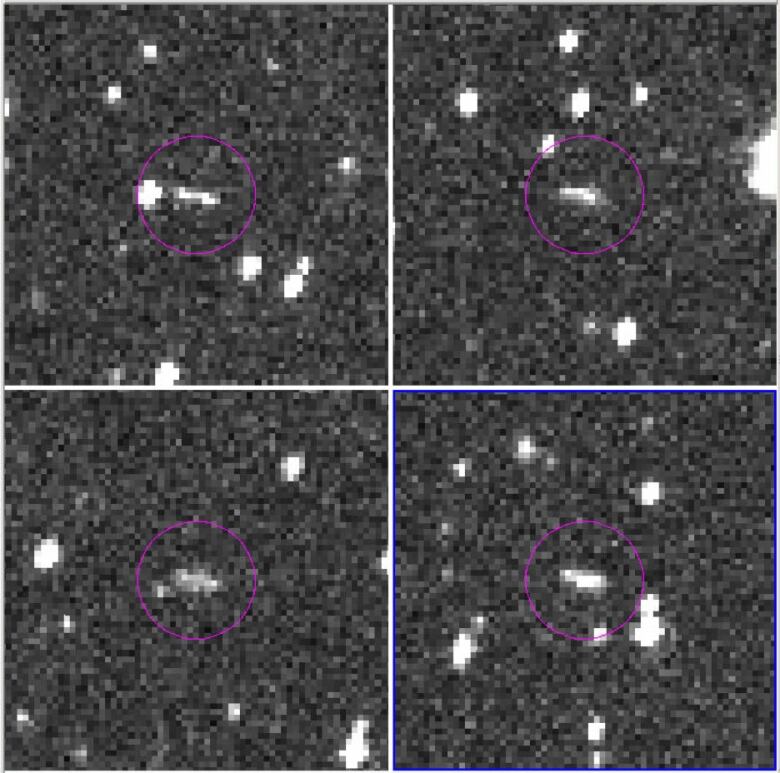Small asteroid on collision course with Earth discovered only hours before impact
Boulder-sized asteroid was detected by telescope 8 hours before disintegrating in atmosphere over Botswana

An asteroid on a collision course with Earthbroke up after entering the atmosphere over southern Africa on Saturday just eight hours after it was discovered.
Asteroid 2018 LA was first identified early Saturdaymorningby the Catalina Sky Survey telescope near Tucson, Ariz.
At just two metres across, the asteroid was too small to pose a threat to any cities or towns andwas expected to safely disintegrate as it entered Earth'satmosphere.
Most of it did burn up,however,scientists think it may have produced meteorites along its path as it descended, witha larger piece believed to have landed near Namibia or Botswana.
Preliminary data suggests that asteroid 2018 LAentered the atmosphere at roughly 15 kilometres/second (or 54,000 km/h)and released energy equivalent to a half-kiloton of TNT.
Small asteroids are difficult to detectandimpact Earth more often than manymay realize, according toPeter Brown, aphysics and astronomy professor at Western University who specializes in meteor science.
"It's the sort of thing that happens about every month or two," Brown said. "It's not that unusual."
Strong infrasound detection of a bolide at station I47 in South Africa today at 1730 UT. Origin time between 1645-17 UT over Botswana. Yield 0.3-0.5 kT, corresponding to 2m diameter asteroid. #fireball #neoimpacts pic.twitter.com/fVe5GtwTtb
—@pgbrownBut the circumstances around 2018LA wereunusualfor two reasons.
First, the asteroid crashed into the atmosphereover land, where people could witness it disintegrating as a bright fireball in the sky.(Because the Earth's surface is mostly water, with large, unpopulated or sparsely populated areas,chances are animpact would go undetected.)
And second, these small asteroids are often identified only after they enter our atmosphere, picked upby the International Monitoring System, part of an organization designed to monitorinfrasound or low-frequencysound wavesin the atmosphere.
Calculating its trajectory
Astronomers need long-term data to accurately determine the trajectory of asteroids and,as 2018 LA had just been identified, they didn't have much to go on.
Using what information was available, however, they were able to roughly calculate where it would enter Earth's atmosphere: In a swath stretching from southern Africa, across the Indian Ocean to New Guinea.
With more telescopes pointed at the asteroid, it became apparent that there may be an impact, Brown said.
By early Saturday evening local time (12:44 p.m. ET), there were reports of a fireball in the sky over Botswana, which lined up with calculations made by scientists. It was captured onwebcams in the area as it lit up the sky.
Meteorites likely reached the ground as the asteroid broke apart, Brown said.
Only twice before has a small asteroid been detected hours before colliding with Earth. The first was 2008 TC3, which was detected 15 hours before it broke up over northern Sudan on Oct. 7, 2008. The second was 2014 AA,discovered only a few hours before it impacted over the Atlantic Ocean on Jan. 1, 2014.

And while 2018 LA was discoveredshortly before it arrived at our atmosphere, there are numerous organizations searching for potentially hazardous asteroids (PHAs)that could seriously impactlife.
Smaller objects are fainter and more difficult to spot in a large sky, though efforts like the NASA-funded Catalina Sky Survey are increasingly able to search a wider field of sky to find these somewhat elusive objects.
Asteroids are large debris left over from the formation of our solar system. Most are located in the asteroid belt between Mars and Jupiter,but occasionallysome can get jostled out of their orbit, posing a threat to Earth.
According to NASA, however,about 90 per cent of all asteroidslarger than one kilometrehave been discovered.
Considering the short time available to scientists using telescopes around the world to track and calculate the impact of asteroid 2018 LA, Brown called the results successful.
"It's really tough to do," said Brown. "In general, I'd say the system worked pretty well."












_(720p).jpg)


 OFFICIAL HD MUSIC VIDEO.jpg)
.jpg)



























































































